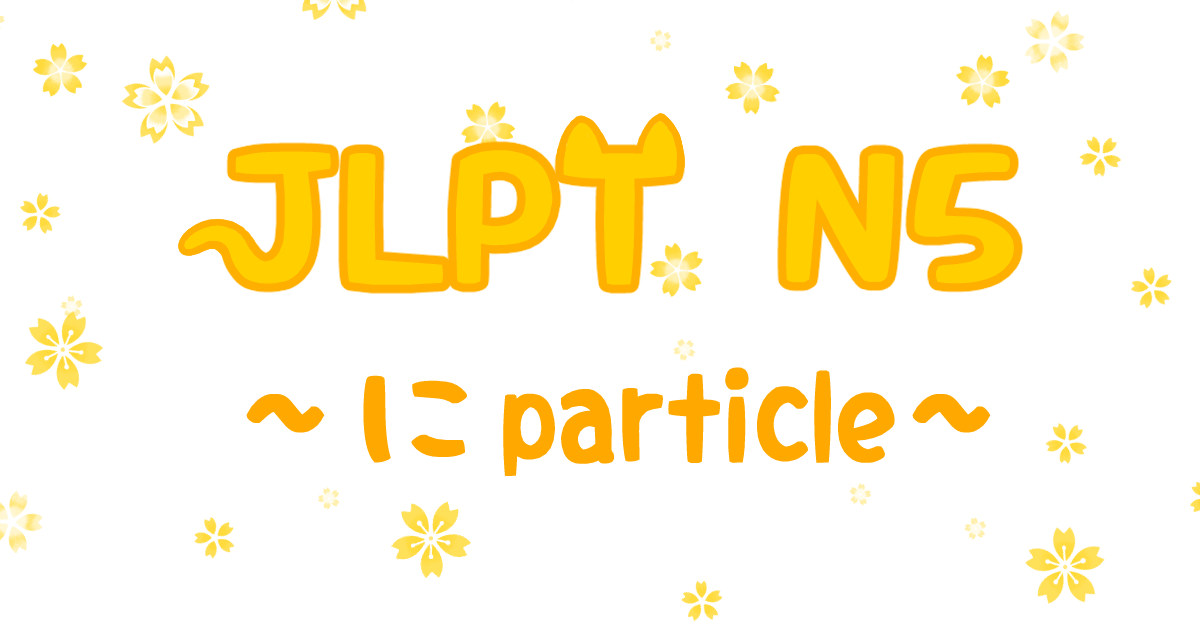Many Japanese learners get confused about how to use the に particle because Japanese has particles like で that are similar in meaning.
Each Japanese particle has a meaning and concept. Understanding the concepts and meaning helps you correctly use Japanese particles.
The に (ni) particle can be mostly used for describing a place, time, and action with some verbs. The concept of the に particle is "point" and "direction," which we will explain later in the article!
Learning points
- The concept of the に (ni) particle
- Verbs that are used with the に (ni) particle
- Example phrases and pronunciation
に particle
The basic concepts of the に particle are “point” and “direction.”
These concepts "point" and "direction" are sometimes separated from each other and sometimes used together.
Let’s see how to use the concept “point” of the に particle first.
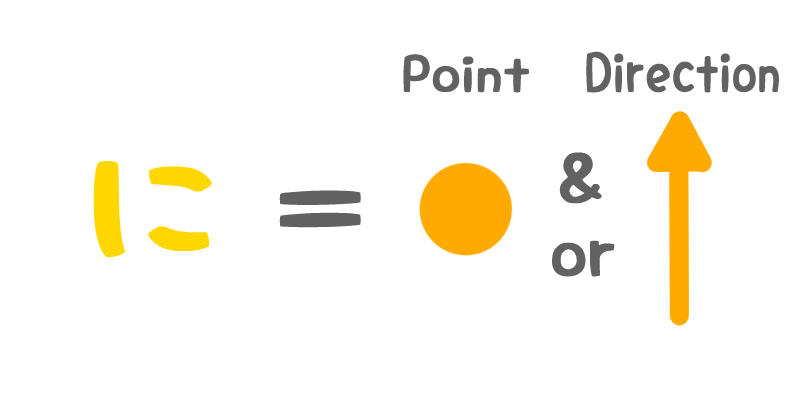
The Point Concept
There are two types of point concepts. One is the Existence Point and the other is the Landing Point.
Both concepts look similar but there are some differences in "movement" and the "verb that is used with."
Existence Point
An existence point is a point in which something is being or existing. You can use this when you are in a place or living somewhere. (You are "existing" in these places.) The image of the concept is as follows.

The に particle as an existence point is used with the existence verb like いる, ある.
Existence verbs are used with the に particle
~に+いる、ある、住む、勤める (existence verbs)
For example, you say 私は日本にいる when you want to say "I’m in Japan."
It's sometimes confusing which is the right particle to use. Do I say にいる or でいる? In this case, it's not correct to say 私は日本でいる because it will mean that "you're being Japan." No, you are a human!
When you want to say that you're at somewhere, に is the right particle that can be used with the existence verb.
You can learn about the で (de) particle in Japanese grammar で(de) particle【JLPT5】. Check it out if you haven't read it yet!
私は日本にいる。
I'm in Japan.

Let's learn about the に particle of the existence point with example sentences.
word list
住む(すむ): to live
会社(かいしゃ): company
勤める (つとめる): to work
日本にいる
I’m in Japan
アパートに住む
Live in an apartment
会社に勤める
Work in a company
Existence Point (Time)
The existence point can be used for time too. It expresses that something is done at a point in time.
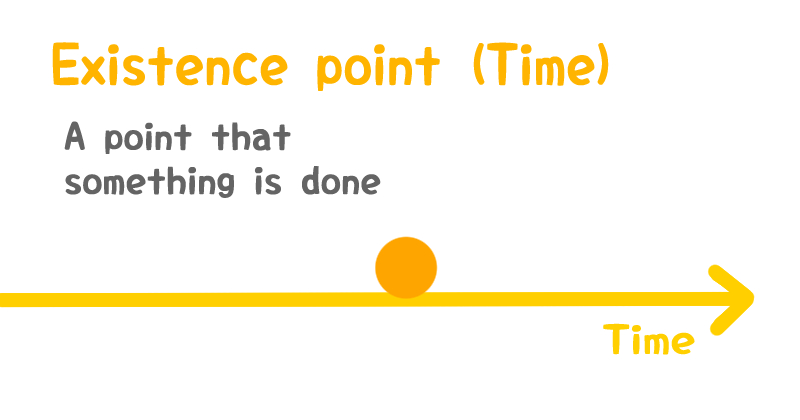
grammar
Time+に+verb or sentence.
For example, you say 7時に朝ごはんを食べる when you want to say "I have breakfast at 7." The action of having breakfast is done at the point of 7’o clock.
You can also change the position of 7時に (7 o'clock) to in front of 食べる in the sentence like 朝ごはんを7時に食べる.

Let's learn about the に particle that describes a point of time with example sentences.
word list
朝ごはん(あさごはん): breakfast
食べる(たべる): to eat
寝る(ねる): to go to bed
駅(えき): station
着く(つく): to arrive
7時に朝ごはんを食べる
Have breakfast at 7.
11時に寝る
Go to bed at 11.
15時に駅に着く
Arrive at a station at 15:00. (3:00 PM)
Landing Point
The concept of the Landing Point is a movement that goes towards the existence point.
The landing point is used with a normal verb and expresses the point that the action goes toward.
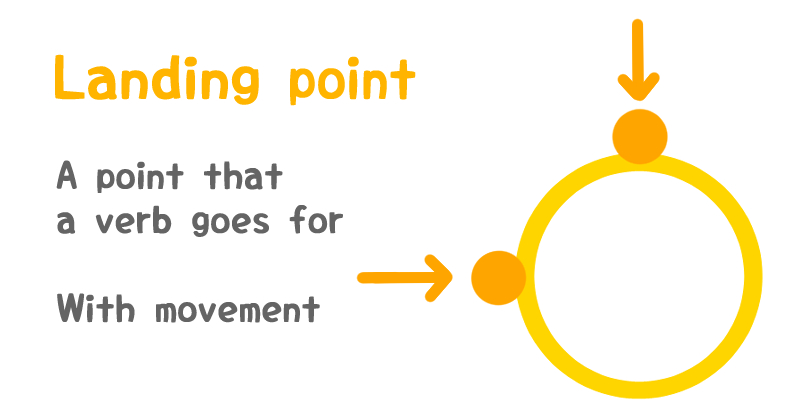
Existence verbs are used with に particle
~に+ 行く、乗る、言う、置く (verb)
For example, when you want to say "I ride a horse," you say 馬に乗る. The action of riding a horse is done on the back of a horse (landing point).
word list
馬(うま) : a horse
電車(でんしゃ): a train
乗る(のる): to ride
海(うみ): sea
行く(いく): to go
テーブル : a table
マグ : a mug
置く(おく): to put
馬に乗る
Ride a horse
電車に乗る
Get on a train
海に行く
Go to the sea
テーブルにマグを置く
Put a mug on a table
The Direction Concept
The Direction Concept expresses change.
The に particle shows the change from one state to another.
Existence verbs are used with に particle
~に+ なる, 変わる
For example, the に particle can be used when a traffic light turns green. You say 信号が青になる. Note: in Japan, the green traffic light is called blue, even though technically it is green.
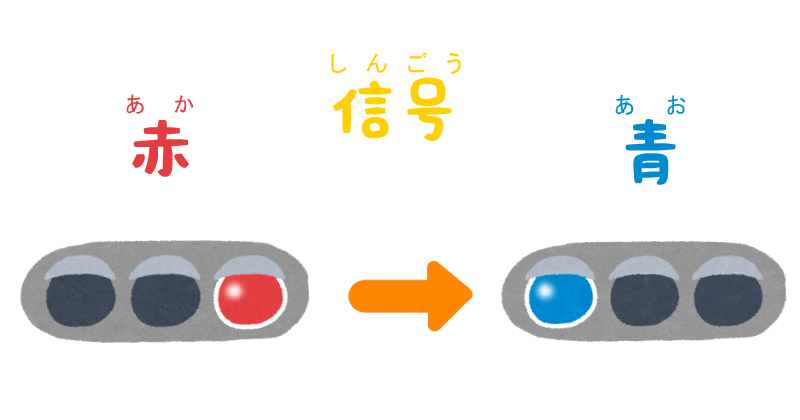
The light changes from red to green. The に particle is used for this change of state.
word list
夜(よる) : night
明ける(あける): to brighten (as in day breaks)
朝(あさ): morning
今年(ことし): this year
カエデ : maple tree
赤(あか): red
夜が明けて朝になる
Day breaks and the sun rises. (Lit. Night brightens and turns to morning)
今年で21歳になる
Become 21 years old this year
カエデが赤になる
Maple leaves turn to red
The Direction that Goes to a Purpose
The に particle can be used with verbs like 行く (go), 来る(come), 帰る (go back).
The concept of the に particle when it’s used with those verbs is "a direction that goes to a purpose."
For example, when you go to see your friends, you say 友達に会いに行く.
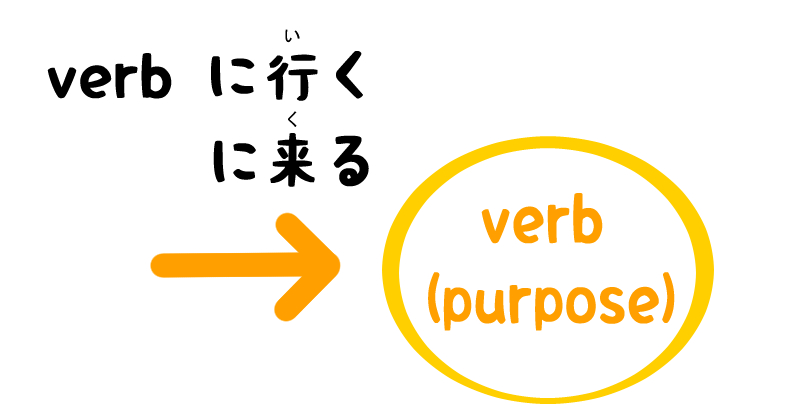
An action is done for a purpose.
word list
友達(ともだち) : friend
会う(あう): to meet
行く(いく): to go
兄弟(きょうだい): brother
手伝う(てつだう) : to help
来る(くる): to come
両親(りょうしん): parent
帰る(かえる): to go back
友達に会いに行く
Go see one’s friends.
兄弟が手伝いに来る
My brother comes to help me.
両親に会いに帰る
Go back home to see one’s parents
Summary
まとめ
The concept of the に particle is “point” and “direction.
The existence point is the one point, place, or time that something is happening and something is done.
The landing point is the point that the verb goes to. It is also becoming a purpose of the verb.
The direction concept of the に particle is expressing the change from one state to another.
Work cited
○いちばんやさしい日本語教育入門 by 今井新悟
Easiest Introductory Japanese Teacher's manual by Shingo Imai, published in 2019

